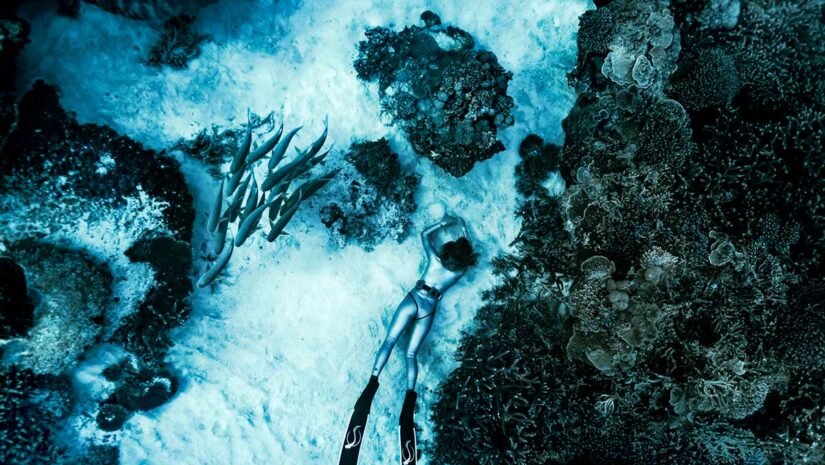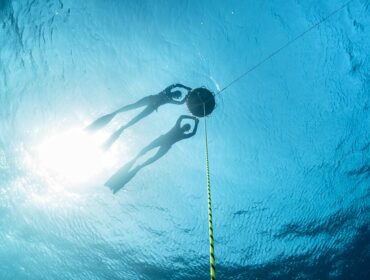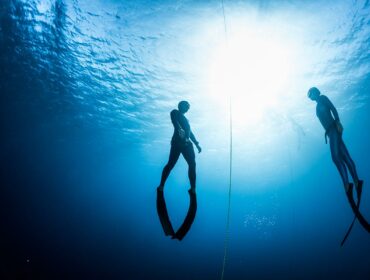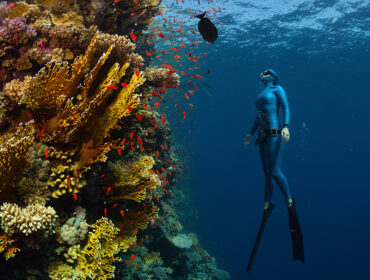Freedivers are those who dive underwater on a single breath without the aid of respiration. This guide serves as an informative source of what professional freedivers have in their freediving equipment bag, plus tips and tricks for your practice. Please make sure before you begin your journey that you complete a freediving course with a certified freediving instructor.
My journey to freediving
Personally I started freediving several years ago when I moved back to my hometown, The Gold Coast in Queensland, Australia. Always having a tangible connection to the ocean, I moved back to the small beach town after a few years in the bigger city and as a means of coping with the grief of losing my mother. The presence experienced and discipline discovered when using a single breath to immerse oneself into another world was captivating and mesmerizing to me. I didn’t know it at the time, but it freed me. It’s hard to explain until you have experienced the mindful and meditative state of a breath hold, the worries and noise of a modern and oftentimes chaotic world are left at the surface. The weightlessness feels like the freedom of flying.
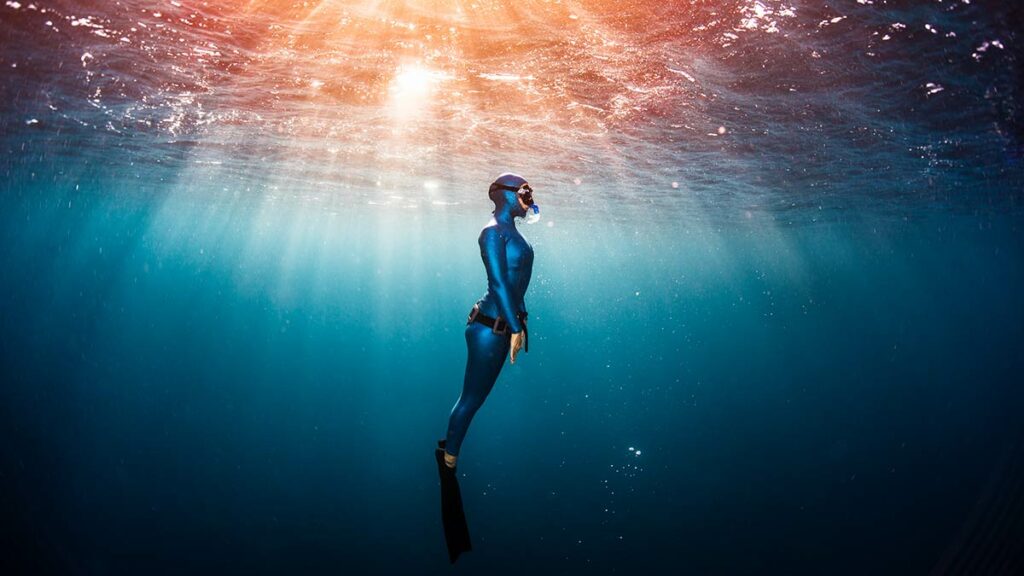
The history of freediving
The word apnea is derived from the Greek a-pnoia, meaning “without breath,” or “without wind” and is commonly used in the immersive underwater sport of freediving.
The origins of freediving or “skin diving” begins with populations settled by the sea or lakes, who began freediving out of necessity for survival. However, today it is more widely associated with underwater photography, spearfishing, or as a competitive sport. And it is a sport for everyone! It’s open to those who wish to experience the pleasures and peace of breath hold.
Humans have been returning to the ocean for many years. It may surprise you to learn that more than any other sports, freediving extracts ancient reflexes of human beings. As a result of millions of years of human evolution, submersion in the ocean triggers ancient genes that humans share with many other marine animals.
The science behind freediving
Scientists have been researching “The Master Switch of Life” for many years. This transformation is known as the mammalian dive reflex, describing the many switches or reflexes triggered when we enter the water. Turning us into efficient deep-diving-animals, the heart, lungs and brain are among the organs that work in harmony with other triggers to protect us against the immense pressure of the deep blue.
All humans have this mammalian dive reflex and connection to the ocean; we simply need to get in the water and the body will know the rest. You will feel the transformation begin. Reacting to the largest mass on the planet, your body starts to enter relaxation and stress begins dissipating.
The ocean is a terrain very different to the one we live in. To immerse yourself in the depths of the big blue, we need special equipment that supports our adaptation to the environment we are entering. Mask, snorkel, fins and a wetsuit are the fundamentals we need to assist with the obvious obstacles of sight, efficient movement, and for maintaining our warmth. It is essential to have faith in our freediving equipment, to keep calm and relaxed in the water, to dive safely to new depths, both physically and mentally.
Important: Freediving Safety
There are many options to assist your freediving experience. Freediving is an easy sport to enter, however, there can be serious and life threatening risks if you have not been taught by a qualified instructor and insured agency.
There is a lot of safety information, techniques and physiology to learn and despite the lack of equipment needed to begin your freediving journey.
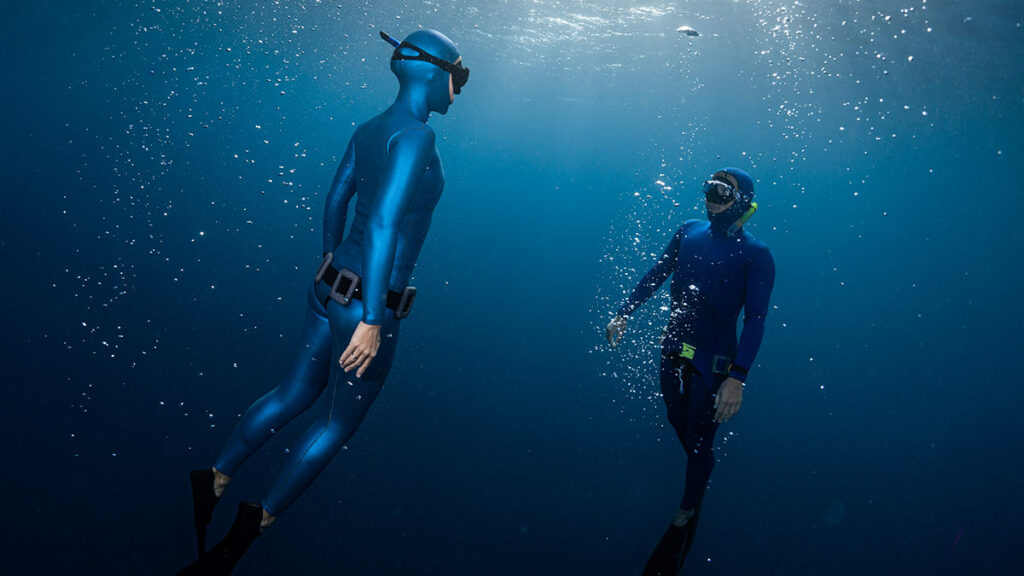
Freediving Equipment: Everything You Need in Your Gear Dry Bag
Mask
There are many masks out there and they will all be adjustable. It can be overwhelming when you begin, knowing which to choose and what will be best for the type of diving you will be doing.
An effective mask for freediving must have a reduced volume, a low volume mask means less air is required from your lungs to equalize as you descend. Another thing to consider is the skirt, which is the part that is in contact with the face. It must be adapted to the profile of the individual face. It is important not only that there is a good, comfortable seal around your face, but that the nose pocket does not create any points of constriction. The freediver must be easily able to equalize the air in the mask, countering the risk of mask squeeze.
Choosing a mask will come down to a personal preference, in the end it comes down to the individual, the type of diving, and your comfort.
Helpful tips for a freediving mask:
- When a mask is new, it is best to wash it prior to your first dive. Using a detergent found in dive shops, or even toothpaste, to prevent it from misting or fogging.
- Before diving, saliva or de-fog can be applied to the lenses to prevent the mask from fogging during your dive. Apply whilst dry, quickly rinse and place your mask on, try not to remove it from your face for the duration of your dive.
- Don’t have your mask too tight on the surface, remembering the deeper you descend the higher the volume of pressure.
- Keep your mask stored away from direct sunlight and always rinse with fresh water after use.
Best freediving masks
Snorkel
The snorkel has the great responsibility of allowing the diver to breathe on the surface, in the most efficient way possible with their face immersed in the water. For freedivers, the snorkel must be as simple as possible.
Helpful tips for a freediving snorkel:
- Having a spare snorkel is recommended, many snorkels are soft and can be folded and stored easily.
- For safety reasons, a snorkel must always be removed from the mouth before you dive.
Best freediving snorkels
Fins
Fins are a means of propulsion and one of the most important pieces of equipment for your freediving experience.
Freediving fins created for the specific use of apneist are with rubber-type foot pockets, and blades up to a meter in length made of plastic (polymer), carbon fiber or fiberglass. As with many gear choices, each of these materials have pros and cons.
There are two types of fins: bi fins or monofin. Bi fins are most commonly used in recreational freediving and buddying, whereas a monofin is most commonly used for dynamic and constant weight competitions in freediving. Note: when buddying, you will always wear bi-fins for safety reasons.
Helpful tips for freediving fins:
- Always rinse in fresh water and avoid leaving them exposed to direct sunlight.
- At the end of each season remember to check the attachment of screws to the blade, clean and lubricate them with a spray or liquid antioxidant.
Best freediving fins
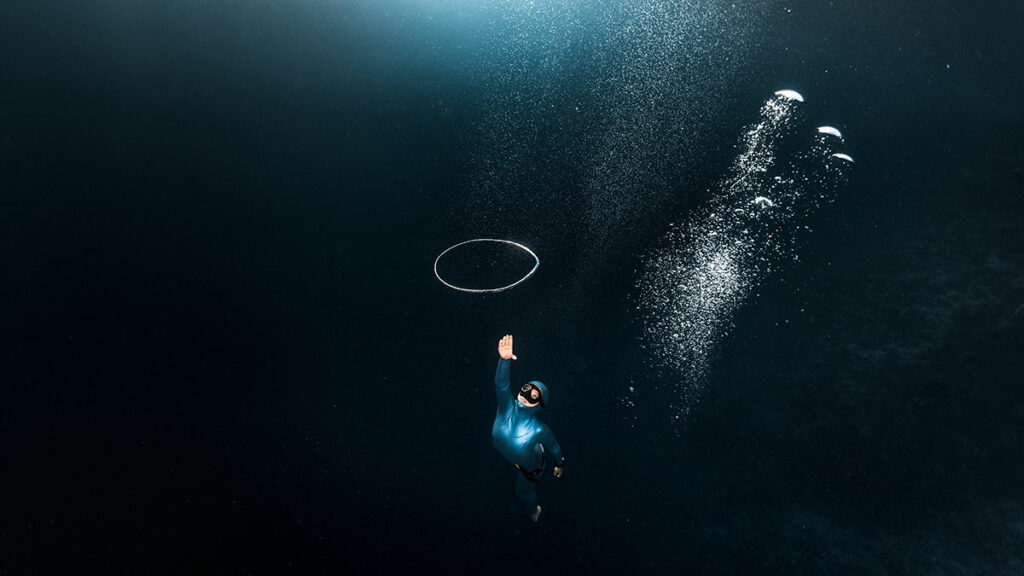
Wetsuit
There are numerous models of wetsuits available, including made-to-order, high waist, full body with shoulder straps, with or without a zip or a hood, single or double lining, ocean or pool, neoprene or open cell neoprene.
Depending on the type of diving (competitive pool freediving, recreational ocean deep diving and line diving), there are many different options and materials to choose from. Above all, a wetsuit must fit “like a glove”, meaning it is the right size and thickness to isolate the body from cold water, and be without gaps for the water to flow through and dispersing precious body heat.
A wetsuit will come down to personal choice. There are options for custom-made pieces for all bodies, and it is best to consider the use of the suit and location you will be using it.
Helpful tips for a freediving wetsuit:
- Your wetsuit should be treated like a garment of clothing, taking extra care to not crease or damage.
- Always wash with fresh water after use, whether in chlorine or salt water.
- Avoid leaving it to dry in the sun for too long.
- Once dry, store on hangers in a dark and dry location (wardrobe)
- Avoid storing in a diving bag.
Weight Belt & Weights
The main function of the weight belt is to balance the positive buoyancy of your wetsuit. Your weight system for freediving is made up of two parts — the weight belt itself (typically made from rubber) and the individual weights.
Helpful tips for freediving weights:
- The belt must be quick release; for safety, this can be operated by diver or buddy.
- It is best to remove the weights from the belt for storage.
- Wash in fresh water and once dry, roll in a loose coil.
Best freediving weights
- Seac Marseillese Weight Belt
- Highland by XS Scuba Stainless Steel Harness Buckle
- Sea Pearls Uncoated Lace-Thru-Style Weights
- Sea Pearls Black Vinyl Coated Lead Weights
Gloves & Socks
Gloves are a safeguard from the sun, cuts, scratches, and they help protect from the cold. You still want to be able to use your hands for equalization or operating a camera, or when spearfishing. However, they are there to reduce heat loss.
The function of socks, as you may have guessed, is also for protection and warmth. They also aid in preventing blisters or chafing from foot pockets. Heavier socks or booties can be worn with open heeled fins.
Best freediving gloves & socks
Watch & Dive Computer
A watch must be suitable for underwater use, being that it is waterproof and resistant to pressure. A dive computer specifically for freedivers will measure depth, dive time, maximum depth, depth alarms and surface intervals and are useful for evaluating individual performances and for setting up personalized training programs. A dive computer will be useful in the pool or with deep dives, and for assisting your buddy. They can also tell you the current temperature of the water which will assist in monitoring your personal performance and the warmth of the suit required.
Best freediving dive computer
Buoy & Line
Made of safety colors — red, yellow, orange — a surface marker buoy not only indicates on the surface that there is a diver below, but is a place to store essentials like water, spare equipment, or your GoPro.
The features of the dive line should be white or another highly visible color. The diver will be connected by a lanyard to the line either via wrist or waist.
For safety, it is important to never dive alone, and always dive with a certified buddy. Make sure the first time you set up a buoy and line, an instructor is with you to oversee it is done correctly.
Lanyard
A freediving lanyard is mandatory equipment in competitive dives and for recreational line training. The diver is attached to the line by the lanyard and this can be used in the case of an emergency by pulling the line up with the diver attached.
A lanyard will have a quick release system in case of entanglement and is not typically longer than a meter.
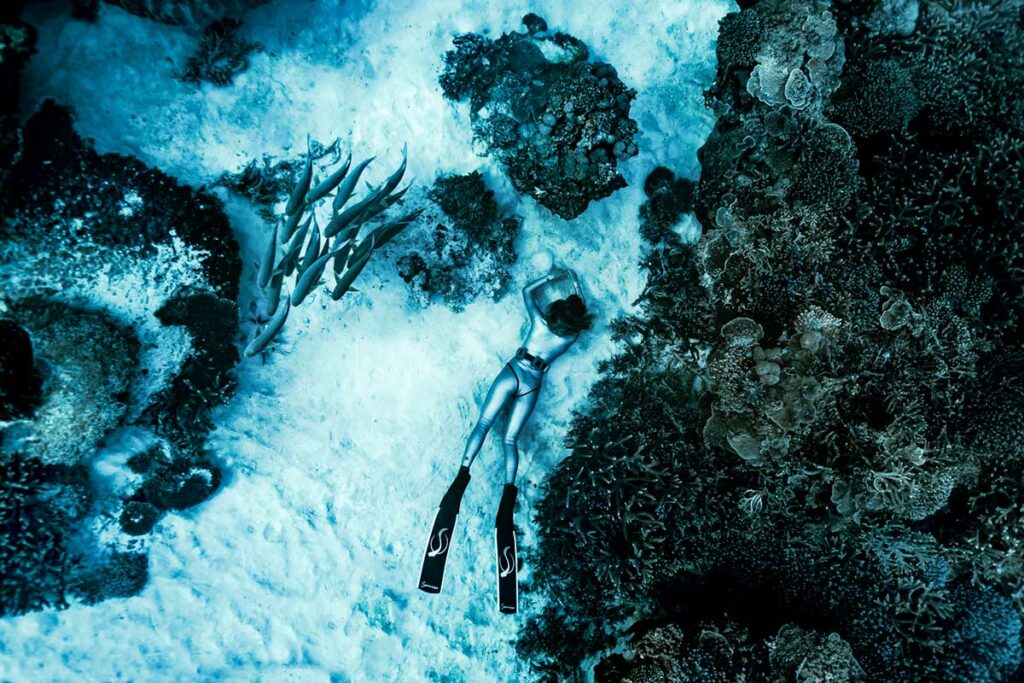
Optional Freediving Equipment:
- A nose clip is typically used in the pool or for hands free equalization in depth disciplines.
- A dive knife could be used to free oneself in the unlikely event of entanglement. Freedivers should rescue gear and only carry the bare essentials.
- Fin keepers are used to hold the fin fast to the foot and are worn to hold fast to improve the fit of the fins and prevent them from accidentally coming off.
- A log book can be used to retain data such as the local marine weather, equipment that was used, and for recording progress and competition results.
It is notable to have a box of small pieces of freediving equipment for repairs of spare parts including:
- Straps and buckles
- Spare snorkel and mask
- Spare gloves and socks
- Defogging spray
- Neoprene glue
- Needle and thread
- Lighter
- Spare batteries
- Torch
- GoPro
Conclusion
Always remember when you are out in nature, do not take or touch anything, leave wild animals alone, and observe from a safe distance. Never dive without a certification and a qualified buddy, always dive within your limits, listen to your body, stay hydrated, and know what to do in the event of an emergency.
Lastly, please make sure that you complete your certification through a credible freediving course with a certified instructor. Your safety is paramount. That way you can enjoy yourself and the splendid wonder of the big blue.

